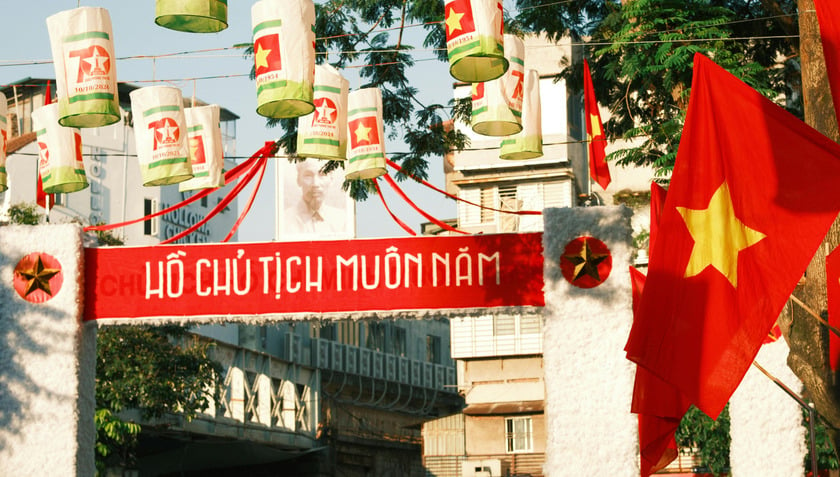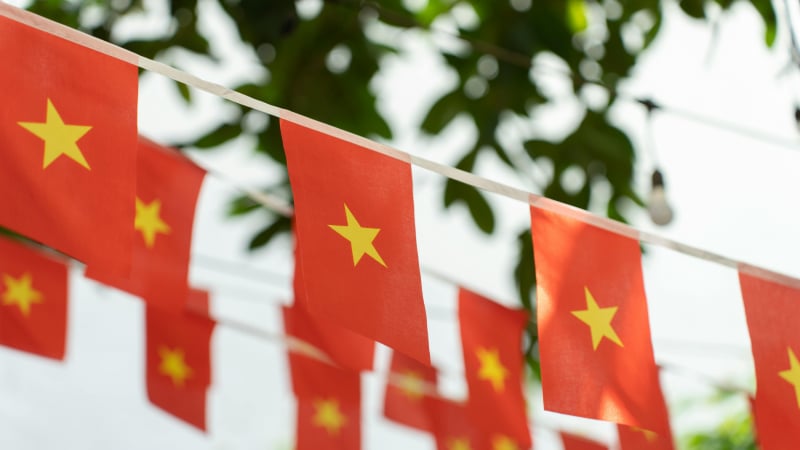July 1, 2025 has gone down in Vietnamese history as an important milestone, marking the birth of a new, streamlined and efficient administrative structure. This event, likened to a "revolution", officially concluded the preparation and implementation phase of Central and local Resolutions and Decisions on merging, streamlining the organizational apparatus, and implementing two-level local government.
This is not only an administrative change but also a strategic move, reshaping the sustainable development space for the country, towards an administration that better serves people and businesses.

July 1, 2025: National festival and historical turning point
The merger, streamlining and implementation of two-level local government is one of the most outstanding achievements of the renovation process since 1986. In a solemn ceremony held simultaneously in 34 provinces and cities across the country, Resolutions and Decisions related to the merger of provincial and commune-level administrative units, the termination of district-level administrative units, as well as the establishment of party organizations, the appointment of Party committees, People's Councils, People's Committees, and Vietnam Fatherland Front Committees at all levels were officially announced and implemented.
These changes do not stop at rearranging the organization of the political system but also have a deeper meaning: it is a "rearrangement of the country", aiming to optimize development space, build a streamlined, efficient, effective and efficient administration. The ultimate goal is to improve the quality of service to people and businesses, creating a more favorable environment for socio-economic development.

July 1, 2025 will go down in the history of Vietnam's state apparatus reform as a groundbreaking and creative milestone, as well as in the history of national construction and development in general.
According to the Resolution on the arrangement of provincial-level administrative units in 2025, a total of 23 new provinces and cities have been formed after rearranging 52 old administrative units. Together with 11 provinces and cities remaining unchanged, from July 1, 2025, the whole country will have 34 provincial-level administrative units, including 6 centrally-run cities and 28 provinces.
Specifically, 19 provinces and 4 centrally-run cities were formed after the reorganization process. Provinces and cities not included in the reorganization include: Cao Bang, Dien Bien, Ha Tinh, Lai Chau, Lang Son, Nghe An, Quang Ninh, Thanh Hoa, Son La, along with Hanoi and Hue cities.
The resolution also emphasized the need for competent authorities to urgently carry out all necessary preparations to ensure that local governments in new provinces and cities officially come into operation from July 1, 2025. At the same time, local governments in previously reorganized provinces and cities will continue to operate until the new local governments are established and put into operation.

This is not simply a rearrangement of administrative boundaries or a step to streamline the apparatus in the narrow sense, but at the same time affirms the political mettle, strategic vision and modern reform thinking of the Party.
With the following two-level local government, commune-level units will have a public administration center and people will come here to solve all administrative needs. Most of the public administrative services have been put online, digitized, and implemented on a digital platform.
The amendment of the Constitution and the Law on Organization of Local Government to realize this new model is not only a strong political action, but also demonstrates the consistent reform vision of the Party and State, of General Secretary To Lam with a clear orientation: putting people at the center, putting efficiency first and putting national development interests above all local interests.

This is also a turning point in strategic institutional thinking: shifting from a multi-level administrative hierarchy model to a leaner, more flexible, effective and closer-to-the-people model.
A new era is opening: the era of state governance according to modern principles, of a streamlined apparatus for development and of an administration that acts, dares to take responsibility and serves the people in a practical way.
Institutional reform, in the end, is not about changing the structure for its own sake, but about serving the people better, more effectively, and more closely. The innovations that will begin on July 1, 2025, are not only about reorganizing the state apparatus, but also about reshaping the relationship between the government and the people – towards companionship, service, and shared responsibility.
The civil servants must constantly improve their capacity and adapt to the new mechanism. In addition, there must be stronger decentralization and delegation of power, ensuring that the local government has sufficient authority and proactively serves the people effectively.



































